This is the sample dataset.
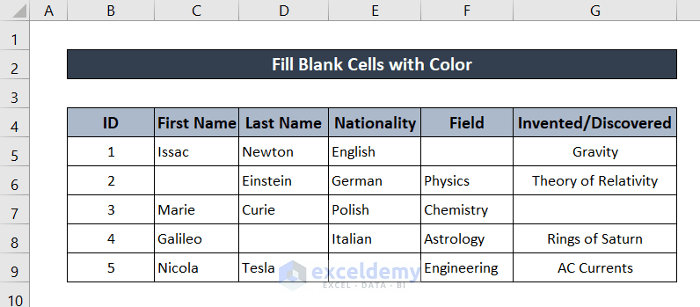
There are several blank cells in the dataset.
Method 1 – Using the Go to Special Command to Fill Blank Cells with Color
Steps:
- Select the dataset. If it is too big, you can select a cell and press ‘Ctrl+A’.
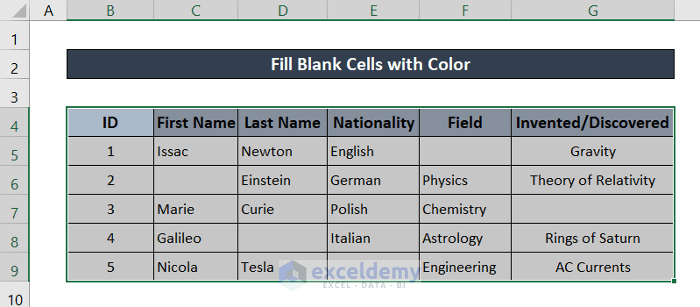
- Go to the Home tab.
- Click Find & Select in Editing.
- Select Go to Special.
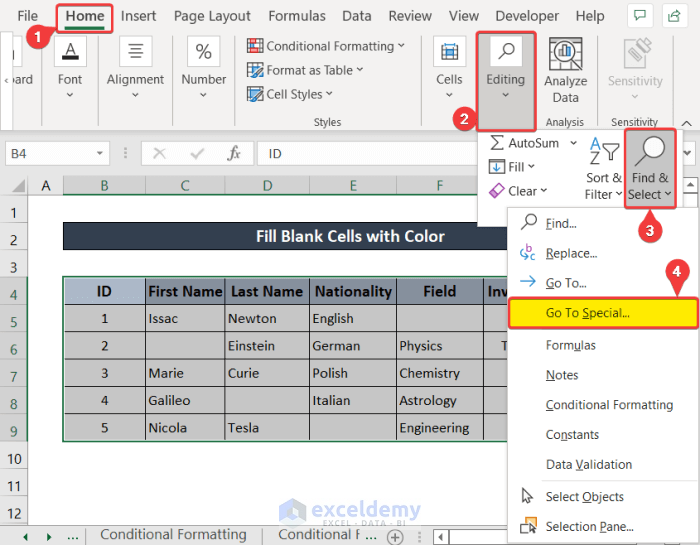
- In Go to Special, select Blanks.
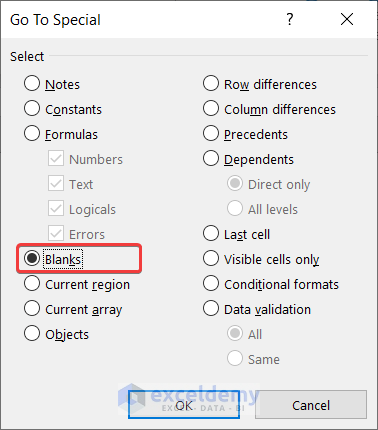
- Click OK.
All blank cells will automatically be selected.
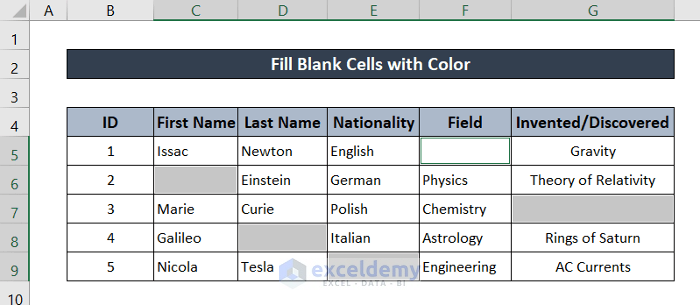
- Go to the Home tab.
- Select Fill in Font.
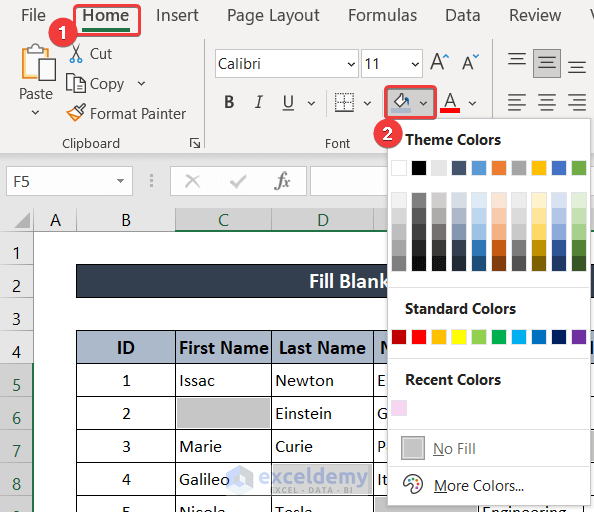
- Select a fill color.
Blank cells are filled with color.
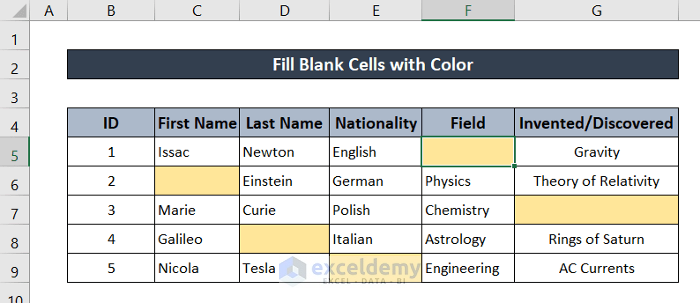
Read More: How to Fill Blank Cells with 0 in Excel
Method 2 – Fill Blank Cells with Color Using the Conditional Formatting in Excel
Steps:
- Select the dataset. If it is too big, you can select a cell and press ‘Ctrl+A’.
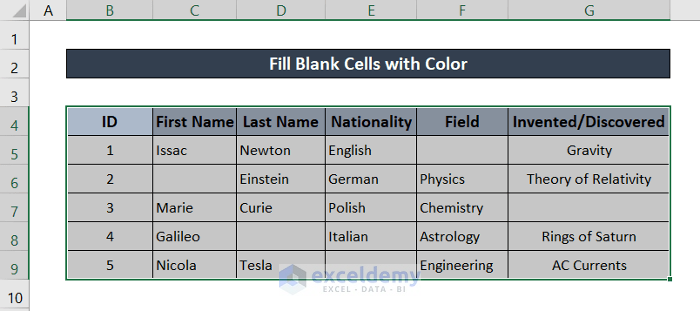
- Go to the Home tab.
- In Styles, click Conditional Formatting.
- Select New Rule.
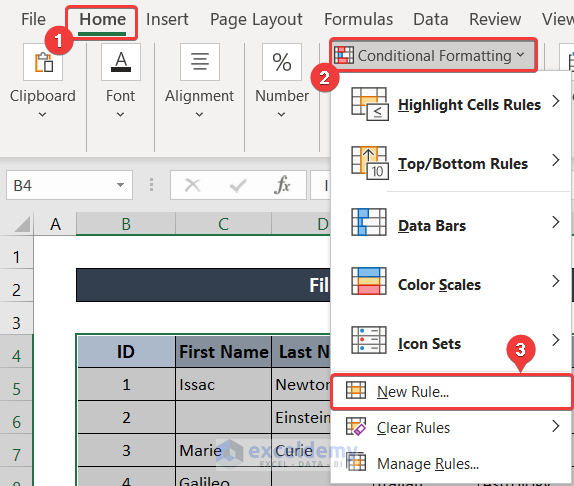
- In New Formatting Rule, in Select a Rule Type, select Format only cells that contain.
- Choose Blanks in Format only cells with.
- Click Format.
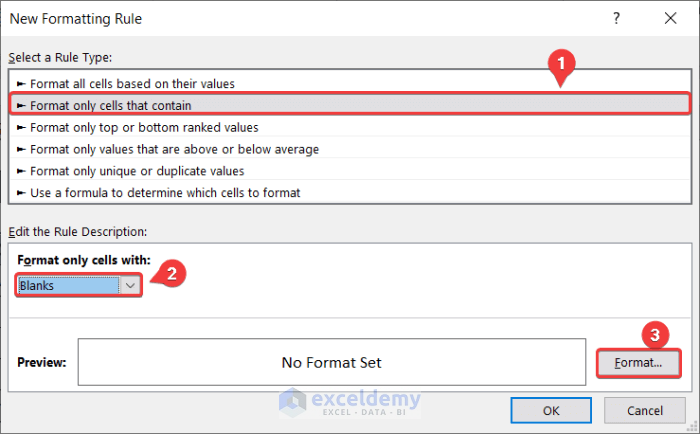
- In Format Cells, go to the Fill tab and select a color.
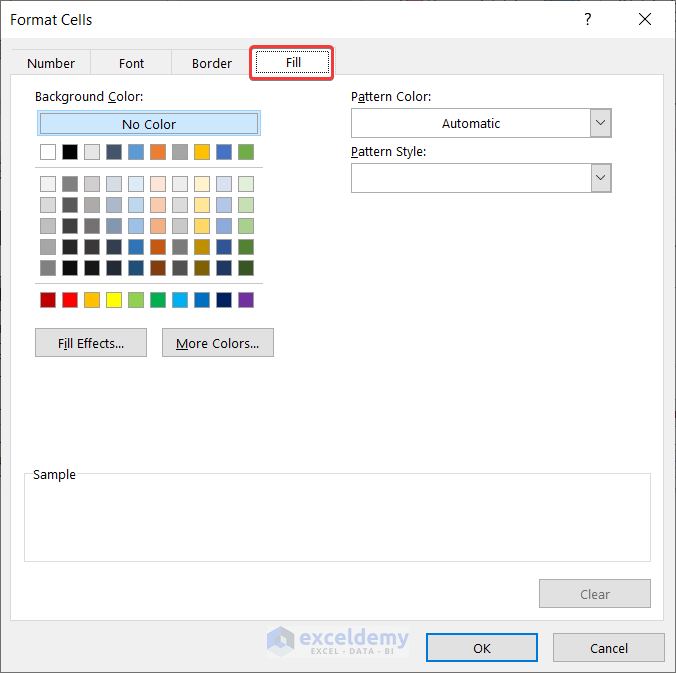
- Click OK in Format Cells and New Formatting Rule.
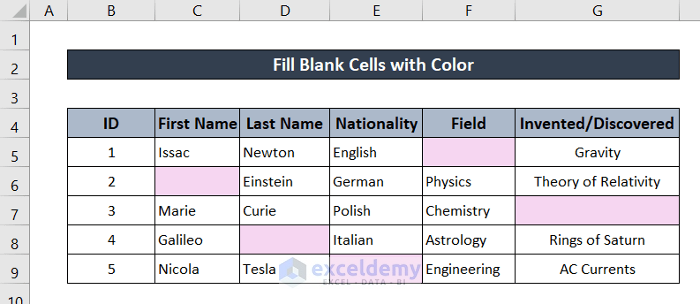
Method 3 – Fill Blank Cells with Color Using a Formula
Steps:
- Select the dataset. If it is too big, you can select a cell and press ‘Ctrl+A’.
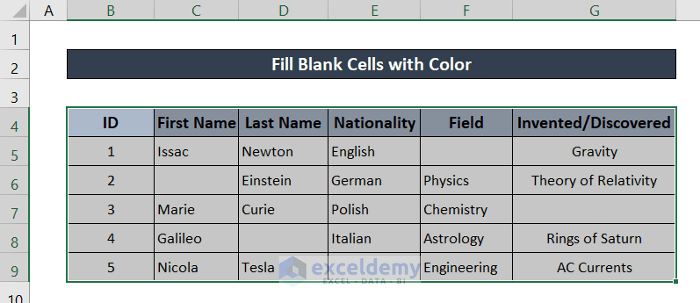
- Go to the Home tab.
- In Styles, click Conditional Formatting.
- Select New Rule.
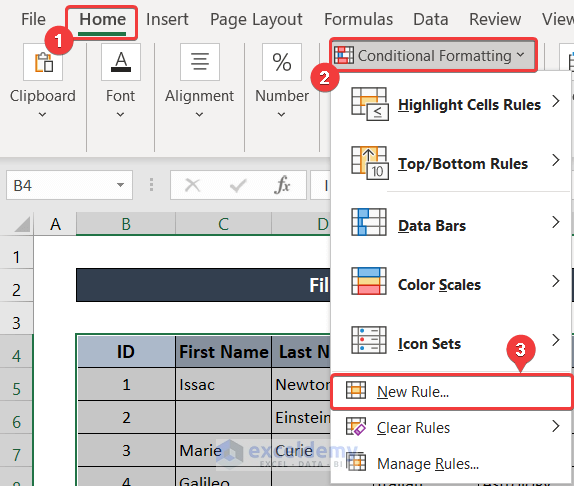
- In New Formatting Rule, in Select a Rule Type, select Use a formula to determine which cells to format.
- In Format values where this formula is true, enter the following formula.
=ISBLANK(B4)
Tou can also use the following formula:
=LEN(B4)=0- Click Format.
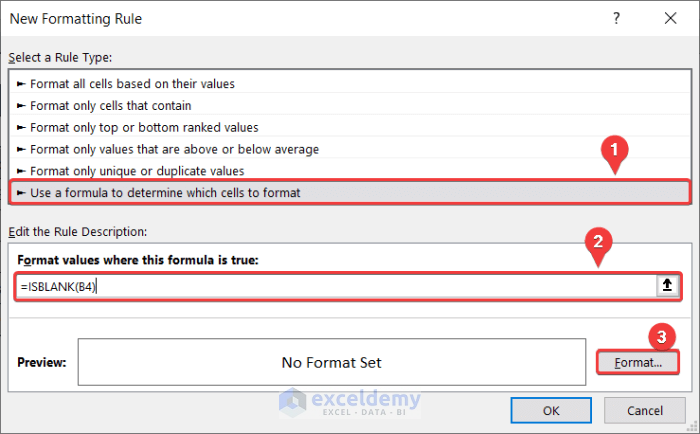
- In Format Cells, select a color in Fill.
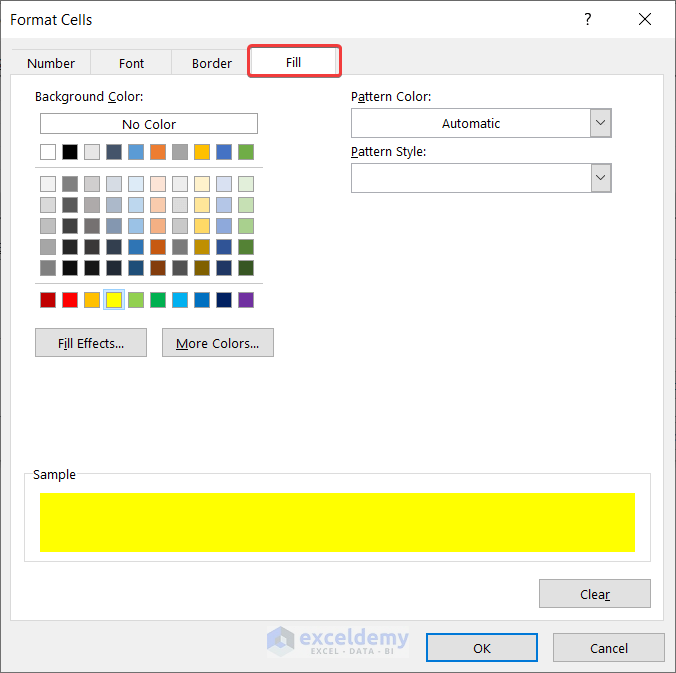
- Click OK in Format Cells and New Formatting Rule to save the changes. Blank cells will be filled with color.
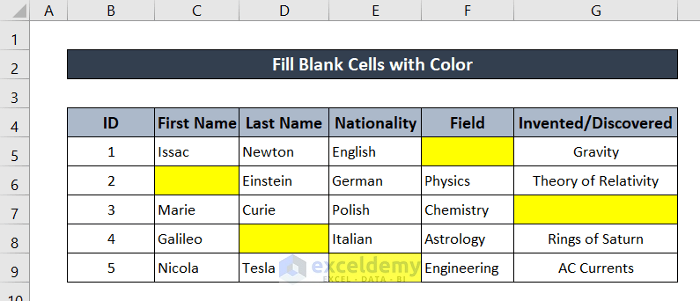
Method 4 – Embedding a VBA to Fill Blank Cells with Color in Excel
Steps:
- Go to the Developer tab and select Visual Basic in Code.

- In the VBA window, select Insert and choose Module.
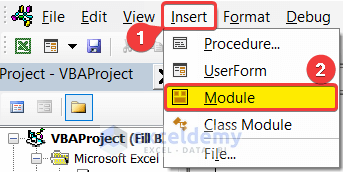
- Enter the code.
Sub Fill_Blank_Cells()
Selection.SpecialCells(xlCellTypeBlanks).Interior.ColorIndex = 4
End SubThe color index is selected as 4.
- Save and close the VBA window.
- To run the code, select the dataset.
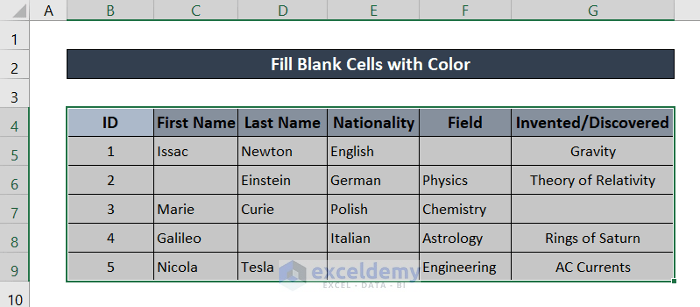
- Go to the Developer tab and select Macros in Code.

- In the Macro box, select the code name (Fill_Blank_Cells).
- Click Run.
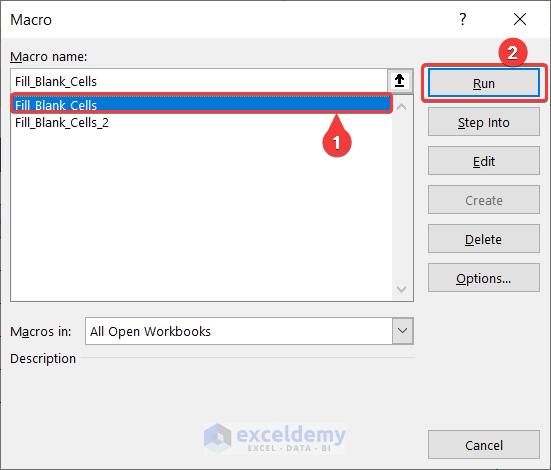
Blank cells are filled with color.
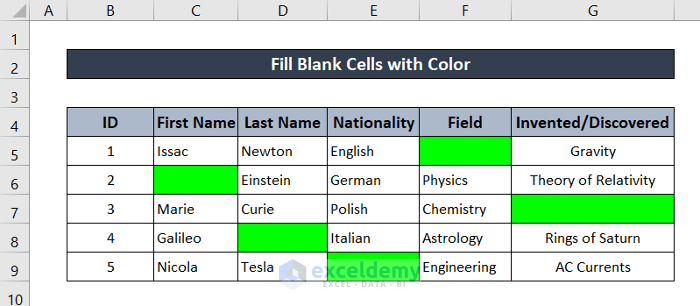
Read More: How to Fill Blank Cells with Value Above in Excel VBA
Method 5 – Using VBA to Fill Blank (but Not Empty) Cells with Color
Steps:
- Go to the Developer tab and select Visual Basic in Code.

- In the VBA window, select Insert and choose Module.
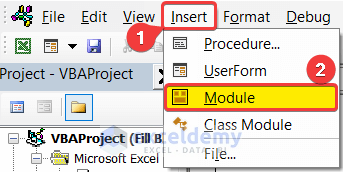
- Use the following code.
Sub Fill_Blank_Cells_2()
Dim rnge As Range
Set rnge = Selection
For Each cell In rnge
If cell.Text = "" Then
cell.Interior.ColorIndex = 20
Else
cell.Interior.ColorIndex = xlNone
End If
Next
End Sub- Save and close the VBA window.
- Select the dataset.
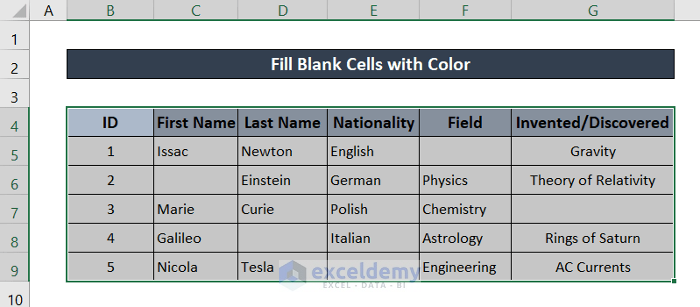
- Go to the Developer tab and select Macros in Code.

- Select the code: Fill_Blank_Cells_2 in Macro name.
- Click Run.
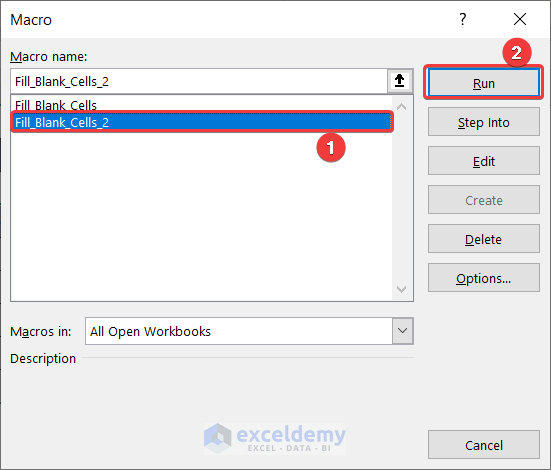
Blank cells and all cells with a white space are filled with color.
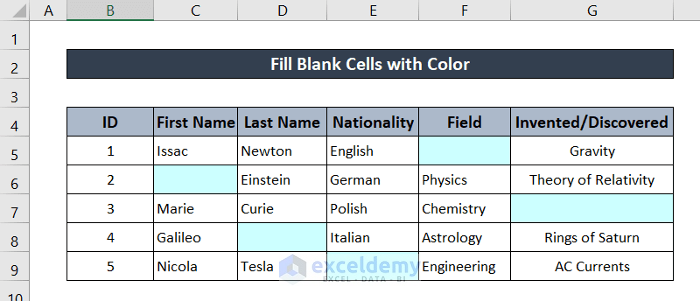
Download Practice Workbook
Download the workbook.
Related Articles
- How to Fill Blank Cells with Value Below in Excel
- How to Fill Blank Cells with Value Above in Excel
- Fill Blank Cells with Dash in Excel
- How to Fill Blank Cells with Value from Left in Excel
<< Go Back to Fill Blank Cells | Excel Cells | Learn Excel
Get FREE Advanced Excel Exercises with Solutions!

